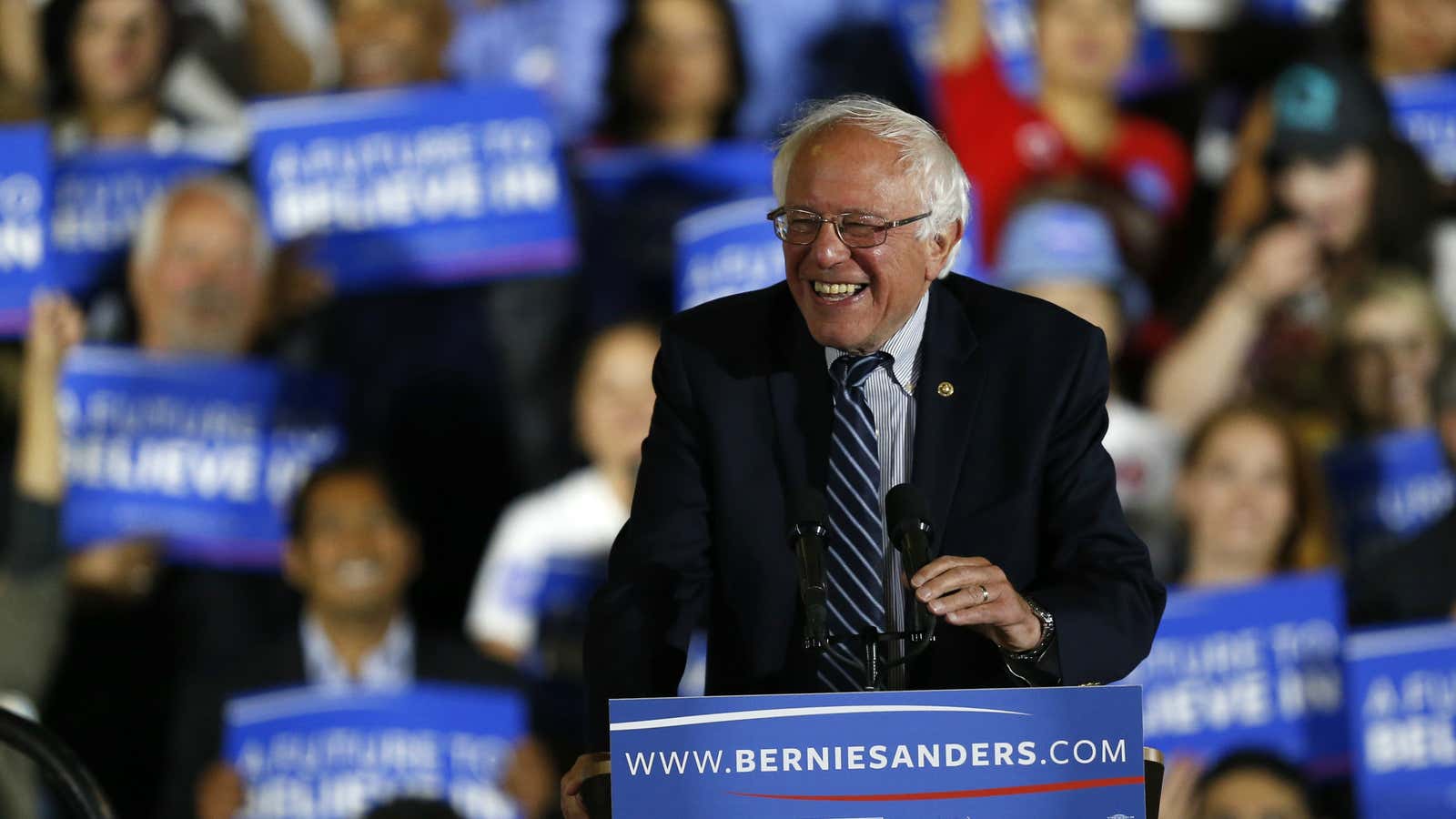Talk about revolution always comes cheap on the campaign trail. And thanks largely to Bernie Sanders, this year is no exception. Though Sanders and his supporters sure like to talk about overthrowing government structures, it’s never been clear that his oft-promised “political revolution” has more practical heft than the usual insurgent sloganeering.
It turns out, it actually might. Last night, in a web broadcast to his fans, Sanders finally explained how his political revolution will work.
“This campaign has never been about a single candidate,” he said in his speech. “Hundreds of thousands of volunteers helped us make political history during the last year…. Now we need many of them to start running for school boards, city councils, county commissions, state legislatures and governorships.”
It had been unclear what Sanders was planning to say in his speech. The media widely expected him to deactivate his millennial multitudes and reprogram them to back his rival, Hillary Clinton, in her battle against Donald Trump for the presidency. Pundits also anticipated clues to his plans for the Democratic national convention in Philadelphia in late July. But the main thrust of Sanders’ speech had little to do with the 2016 presidential race. Though he laundry-listed the progressive principles he wants the party to adopt in Philadelphia and named defeating Trump a “major political task” in the next five months, “defeating Donald Trump cannot be our only goal,” said Sanders.
“Since 2009, some 900 legislative seats have been lost to Republicans in state after state throughout this country,” he said. “In fact, the Republican Party now controls 31 state legislatures and controls both the governors’ mansions and statehouses in 23 states.”
Sanders then directed his supporters to a special page on his website where they can start planning how to run for office.
It’s hard not to think this has been the master plan all along. Some things have never made much sense about Sanders’ campaign—his neglecting to lay out feasible policy details, say, or his drive to stay in a race he clearly couldn’t win.
But thanks to his quixotic campaign, Sanders has raised $207.7 million, the result of 2.7 million people giving an average of $27 apiece. His campaign has pulled in tens of millions of email addresses and fostered the growth of sprawling progressive social media networks. The volunteer masses he’s mustered have made 75 million phone calls, knocked on 5 million doors, and hosted 74,000 meetings, said Sanders in his speech. In other words, Sanders has built the mechanisms and amassed the funding to create what could become a progressive grassroots organization—one that operates outside the Democratic Party.
Of course, this notion isn’t exactly new. Candidates like Howard Dean, Ron Paul, and Barack Obama used internet fundraising and organizing to challenge their parties’ establishments. But none built anything much off the grassroots scaffolding that survived their campaigns (though, to be fair, only Obama actually tried). Then again, these guys were all running for president. Bernie, maybe, never really was.




